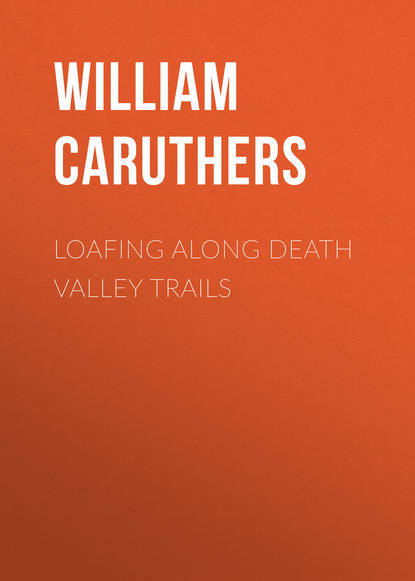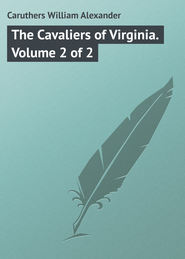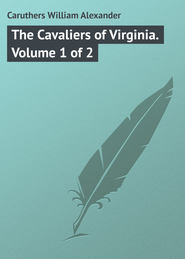По всем вопросам обращайтесь на: info@litportal.ru
(©) 2003-2024.
✖
Loafing Along Death Valley Trails
Настройки чтения
Размер шрифта
Высота строк
Поля
Nearly all old timers had a version of the Lost Breyfogle differing in details but all agreeing on the chocolate quartz and its richness.
That Breyfogle really lost a valuable mine there can be little doubt, but since he is authentically traced from the northern end of Death Valley to the southern, and since the chocolate quartz is found in many places of that area, one who cares to look for it must cover a large territory.
One mine that had never been found turned up in a way as amazing as most of them are lost.
At Pioche, Nevada, an assayer was suspected of giving greater values to samples than they merited. It is known as the “come on.”
In order to trap the suspect, a prospector broke off a piece of old grindstone and ordered an assay. “If he gives that any value, it’s proof enough he’s a crook,” he told his friends.
Proof of guilt came with the assayer’s report. The grindstone was incredibly rich in silver, it said.
“We’ve got the goods on him now,” the outraged prospector announced and it was decided to give the assayer a coat of tar and feathers. Wiser counsel was accepted, however, and it was decided to give him no more business. The fellow was faced with the alternative of starving or leaving the country, when he learned the reason of the boycott. Conscious of no error in his work, he made another and more careful assay. This time the samples yielded even higher values.
It was agreed by all mining engineers of that day that rock like the samples never carried silver or gold. But the assayer knew his furnace hadn’t lied and he couldn’t believe grindstone makers were mixing silver with sand to make the stones. So he traced the grindstone to the quarry it came from. The result was the Silver King, one of the richest silver mines.
THE LOST GUNSIGHT. The first lost mine in Death Valley, preceding that of Breyfogle’s by four or five years, was the Gunsight.
A survivor of the Jayhawkers or the Bennett-Arcane party of ’49 (it is not clear to which he belonged) after escaping death in the valley, saw a deer or antelope and on the point of starvation, took his gun from its strap to shoot the animal. Seeing that the sight had been lost, he picked up a thin piece of shale and wedged it in the sight slot. Later he took the weapon to a gunsmith who removed the makeshift sight and upon examination found it to be almost pure silver. “Where I picked it up,” said the owner, “there was a mountain of it.”
So begins the history of the Lost Gunsight and the story spread as stories will, until ten years later it reached the ears of Dr. Darwin French of Oroville, previously mentioned. The doctor became excited and in the spring of 1860 organized a party to locate the fabulous mountain of silver. Though he searched bravely he failed to find it. However, he brought back the first authentic account of what others with a flair for lost mines could expect in the way of weather, topography, Indians, edible game, vegetation, and water. On this trip, however, he discovered silver in the Coso Range.
The following year, 1861, Dr. S. G. George who had been with the French party, decided he could find the Lost Gunsight and organized an expedition which crossed Panamint Valley, explored Wild Rose Canyon and reached the highest spot in Death Valley. But Dr. George’s valiant efforts were no luckier than those of Dr. French.
William Manly, author of “Death Valley in Forty-Nine” also tried but gained only another tragic experience and came nearer losing his life than he did with the Forty-Niners. Lost and without water and beaten to his knees, he was deserted by companions and escaped death by a miracle. How many have lost their lives trying to find the Gunsight no one knows. There are scores of sunken mounds on lonely mesas which an old timer will explain tersely: “He was looking for the Gunsight.”
Dr. French, after his failure, pursued another and even more intriguing lost mine. With a ready ear for tales of treasure, he heard of a tribe of Indians in the Death Valley area who were making bullets for their rifles out of gold. Accordingly he organized another party to find the gold.
For eleven months Dr. French and his hand-picked comrades combed the country. The gold they found would have loaded no gun, but you may add the Lost Bullet to your list of lost mines. A member of this party was John Searles, for whom Searles’ Lake is named.
Because early prospectors searched for Breyfogle’s lost mine throughout the region where he was found scalped, an interesting digression is not amiss.
A few miles east of Shoshone, there is a Gunsight mine named, of course, by the discoverer in the hope that he’d found the one so long lost. It adjoins the Noonday and was a valuable property which belonged to Dr. L. D. Godshall of Victorville.
The Noonday produced five million dollars and was operated until silver and lead took a price dive. A 12 mile railroad was built from Tecopa to haul the ore. The steel rails were later hauled away and the ties went into construction of desert homes, sheds, fences, and firewood. For years the two properties could have been bought for what-have-you.
Then came Pearl Harbor and a young Kentuckian, Buford Davis, looking around for lead or any essential ores that Uncle Sam could use, dropped off at Shoshone. Charles Brown told him of the Gunsight and the Noonday. Davis inspected the properties, bought them for a relatively small down payment. He chose to begin operations on the Noonday and sent Ernie Huhn, an experienced miner to deepen the shaft.
“Honest to God,” Ernie told me, “I hadn’t dug a foot when I turned up the prettiest vein of lead I’d ever seen.”
In the next six years the Noonday produced approximately a gross of nine million dollars and a net of probably six million dollars.
These figures were given me by Don Kempfer, mining engineer and Shoshone resident, from estimates which he believed accurate.
In 1947 with the rich rewards attained but as yet unenjoyed, Buford Davis made a hurried airplane trip to Salt Lake. Returning, he was only a few moments from a safe landing when the plane crashed and all aboard were killed.
Today, (1950) the property belongs to Anaconda and is considered one of its most valuable mines.
For those interested in lost mines I offer the list that follows. (The names are my own.)
THE LOST CHINAMAN: When John Searles was struggling to make a living out of the ooze that is called Searles’ Lake he had a mule skinner known as Salty Bill Parkinson – a fearless, hard-bitten individual who was the Paul Bunyan of Death Valley teamsters.
While loading a wagon with borax, Salty Bill and Searles noticed a man staggering down from the Slate Range. They decided he was supercharged with desert likker and paid scant attention as he wobbled across the flat from the base of the range. A moment later he fell at their feet. They saw then that he was a Chinaman; that his tongue was swollen, his eyes red and sunken; that he clutched at his throat in a vain effort to speak. He could make no intelligible sound and lapsed into unconsciousness. They thought he had died and was left on their hands for burial.
Salty Bill afterwards stated that he’d said to Searles: “‘Fremont, Carson, or the Mormons old Bill Williams, for whom Bill Williams River, Bill Williams Mountain, and the town of Williams, Arizona, are named was at Resting Springs. He’ll spoil in an hour. I’ll go for a shovel while you choose a place to plant him.’ I’d actually turned to go when Searles called me back.” Searles had seen some sign of life and after removing a canvas bag strapped to his body they took him to a nearby shed, gave him a few spoonfuls of water and eventually he was restored to consciousness. He lay in a semi-stupor all the afternoon and was obsessed with the idea that he was going to die. His chief concern was to get to Mojave so that he could take a stage for a seaport and die in China or failing, arrange for the burial of his bones with those of his ancestors.
He had been working at Old Harmony Borax Works, picking cotton-ball borax with other Chinese employed by the company, but tiring of abuse by a tough boss, he’d asked for his wages and walked out. Some Piutes told him of a short cut across the Panamint and this he took.
En route he picked up a piece of rich float, stuck it into his bag. Farther on his journey he ran out of water and became hopelessly lost. He managed to reach the Slate Range, however, and from the summit saw Searles’ Lake. Though in no condition to stand the rough trip to Mojave he begged to be sent there and yielding finally, Salty Bill, ready to leave with his load, threw the Chinaman on his wagon and started on his trip.
Before reaching Mojave, the Chinaman’s condition became worse and Salty Bill stopped the team in answer to his yells. The canvas sack lay alongside the stricken Chinaman and reaching for it, he brought out a lump of ore.
“Never in my life,” said Salty Bill, “have I seen ore like that.”
The Chinaman gave the ore to Salty, thanked him for his friendly treatment, told him that at a place in the Panamint where “the Big Timber pitches down into a steep canyon,” he had found the float. Again he expressed his belief that he was going to die and exacted a promise from Salty that if death came before reaching Mojave, Salty would see that his remains be shipped to China, adding that any Chinaman in Mojave would provide money if needed. “You find the gold and keep it,” he told Salty. “For me – no good. No can…”
The journey was completed and Salty learned that the Chinaman did die at Mojave and that a countryman there saw that the remains were sent to the Flowery Kingdom.
Salty Bill showed the ore to John Searles and Searles, usually indifferent to yarns of hidden ledges, was even more excited than Salty. For four or five years the two men made trips in search of the place where Big Timber pitches into a canyon. After these, other tireless prospectors sought the elusive ledge but the Lost Chinaman is still lost.
THE LOST WAGON. Jim Hurley went to Parker, Arizona. Broke, he wanted quick money and was looking for placer. The storekeeper was a friend of Jim and had previously staked him.
“I’m looking for a place to wash out some gold, but I’ve no money and no grub…”
Jim was told of a butte on the Colorado Desert. “It’s good placer ground and you ought to pan a few dollars without much trouble…” He provided Jim with bacon and beans and feed for his burros.
Jim set out, found the butte, but no gold and decided to try a new location. On the way out he saw behind some bushes an old wagon that seemed to be half buried in blow sand. Thinking it would be a good feeding place for his burros, he went over. On the ground nearby he saw the bleached skeleton of a man. He threw aside a half-rotted tarpaulin in the wagon bed and discovered fifteen sacks of ore.
It was obvious that the wagon had stood there for a long time. He examined the ore and saw that it was rich and of a peculiar color. He loaded the ore on his burros, returned to Parker and sent it to the smelter. He received in return, $1800. Losing no time, Jim returned to find the source of the ore and though for the next five years he looked at intervals for a quartz to match that found in the wagon, he could find nothing that even resembled it. Where it came from no prospector on the desert would even venture an opinion, but all declared they had seen no quartz of that peculiar color and all of them knew the country from Mexico to Nevada.
But Jim added to his store an adventure and a memory and there is no treasure in this life richer than a memory.
THE LOST GOLLER. This, I believe, is a lost mine that really exists and though the location has been prospected from the days of Dr. Darwin French in 1860, none have looked for it except the one who lost it in 1850. He was John Goller, who came to California with the Jayhawkers.
Goller was a blacksmith and wagon maker and was the first American to establish such a business in the pueblo of Los Angeles. After convincing the native Californian that his spoke-wheel wagon would function as effectively as the rounded slabs of wood, the only vehicles then used, he made a comfortable fortune and no one in the pueblo had a reputation for better character.
Crossing the Panamint, Goller, though strong and husky, became separated from his companions and barely escaped with his life. Coming down a Panamint canyon he found some gold nuggets and filled his pockets with them. After crossing Panamint Valley and the Slate Range, he was found by Mexican vaqueros of Don Ignacio del Valle, owner of the great Camulos Rancho. After his recovery he proceeded to Los Angeles. In showing the nuggets to friends he said, “I could have filled a wagon with them.”
Goller, because of his means was soon able to take vacations which were devoted to looking for the lost location, and though he searched for years he found no more nuggets. Finally he found a canyon which he believed might have been the site, but no wagon load of nuggets.
John Goller was a solid, clear-thinking man – not the type to chase the rainbow. Gold is known to exist in the canyon and some mines have been operated with varying success, but none have been outstanding. It is quite possible that cloudbursts for which the Panamint is noted washed Goller’s gold away or buried it under an avalanche of rock, dirt, and gravel. Manly, with his forgivable inclination to error refers to Goller as Galler and discounts the story.
“Some day,” said Dr. Samuel Slocum, a man who made a fortune in gold, “somebody will find a fabulously rich mine in that canyon.” It is located about 12 miles south of Ballarat and is called Goler canyon – one of the l’s in Goller’s name having been dropped.
THE LOST SPOOK. A spiritualist with tuberculosis came to Ballarat and employed an Indian known as Joe Button as packer and guide. He told Joe to lead him to the driest spot in the country. Joe took him into the Cottonwood Range and left him. The invalid remained for several weeks, returned to Ballarat en route to San Bernardino, presumably for supplies. He was reticent as to his luck but he had several small sacks filled with ore and in his haste to catch the stage, dropped a piece of quartz from a loosely tied sack. It was almost solid gold and weighed eight ounces.
While in San Bernardino he died. His relatives sold the remaining ore, which yielded $7200. They tried to find the claim but failed.
Shorty Harris heard of it months afterward and looked up Joe Button. With his own burros, Joe’s pack horses, and an Indian known as Ignacio, he set out. Cloudbursts had washed out the previous trails, filled gulches, levelled hills and so transformed the country that the Indian was unable to find any trace of his previous course; gave up the hunt and turned back.







